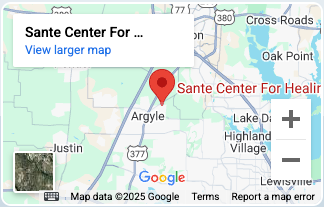Alcohol detox is marked by alcohol withdrawal symptoms, which can arise within hours of the last drinking session. And while the severity and frequency of withdrawal symptoms may be different for every person, there is a general timeline that alcohol detox tends to follow.
Searching for an alcohol detox program near Austin, TX? Reach out to Santé Center for Healing today by calling 866.238.3154 or contacting our team online.
What’s the Alcohol Detox Timeline?
The length of an alcohol detox process is different from client to client and primarily depends on how frequently and how heavily alcohol was used. Alcohol withdrawal symptoms may similarly vary, but the general alcohol detox timeline can be broken down into the following stages:
- Six to 12 hours: Bouts of anxiety, headaches, insomnia, poor appetite, stomach pains, and nausea are common withdrawal symptoms to experience during this period. Remember that these symptoms can appear even if there’s no plan to detox. They can arise simply due to less alcohol in the body than what it normally tolerates.
- 12 to 48 hours: Withdrawal symptoms may escalate in frequency, severity, and variety during this period. They can include hallucinations and seizures.
- 48 to 72 hours: Confusion, fever, excessive sweating, high blood pressure, quick heart rate, and possible delirium tremens (DTs) — a potentially fatal set of withdrawal symptoms — typically occur during this period. It’s at this point that medical supervision becomes sorely needed.
- Past 72 hours: Withdrawal symptoms begin to improve after 72 hours and gradually dissipate over the next week. At the end of this stage, clients should be stabilized and able to transition into further addiction treatment.
What’s the Connection Between Alcohol Detox Timeline and Symptoms of Withdrawal?
The connection is quite clear. As dealing with withdrawal symptoms is typically the focus of alcohol detox programs, they become indications that control the flow of a timeline. However, some clients may experience mild withdrawal symptoms or none that are observable at all.
Alcohol withdrawal begins once the levels of alcohol in the bloodstream drop below what’s normal for the person. However, withdrawal symptoms can also occur when alcohol use is significantly reduced but not stopped entirely. The most common alcohol withdrawal symptoms include the following:
- Anxiety and depression
- Irritability
- Dehydration
- Excessive sweating or hot flashes
- Extreme fatigue
- Nausea and vomiting
- Mood swings
- Rapid heart rate
- Tremors and seizures
DTs is a dangerous set of symptoms that can occur after quitting alcohol. It tends to happen in more severe cases. Sadly, it can be fatal in up to 15% of cases. Older clients with a history of heavy alcohol use or poor liver function are more likely to experience DTs.
When Should You Consider an Alcohol Detox Program?
Now that you know all about the alcohol detox timeline and symptoms of withdrawal, it may be easier to consider overcoming an alcohol addiction. After all, it’s one of the most destructive and dangerous types of addiction. If you require drinking alcohol for your body to feel normal and go about your daily routine, then you likely need professional help.
Remember that getting through the detox process isn’t just a matter of willpower. In most cases, medical detox is recommended when alcohol addiction is involved. In some cases, withdrawal symptoms can be life-threatening. An alcohol detox program provides not only medical support but also supervision and guidance through the process.
Ready To Learn More About Santé Center for Healing’s Alcohol Detox Program?
Addiction is difficult to overcome, but possible with the right kind of help. If you’re looking for an alcohol detox program near Austin, TX, contact Santé Center for Healing today. Reach out to our team online or call 866.238.3154.



